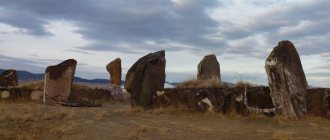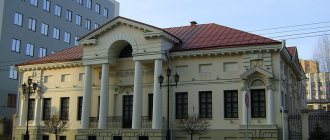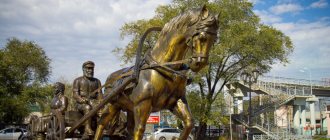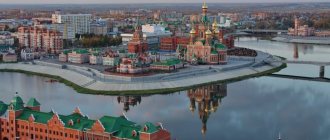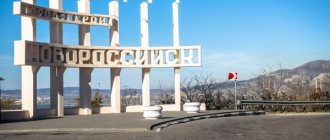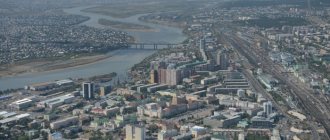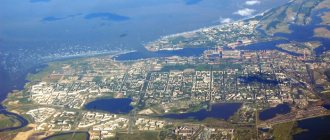What is the first answer that comes to your mind when asked, where is Essentuki? Of course, on the shelf in the store. And, indeed, Essentuki is a particularly popular, and at the same time, no less healthy water with healing properties, which is often prescribed for various diseases.
But have you ever wondered where exactly is the place that supplies this wonderful water?
Essentuki is, first of all, a city and it is located in the Stavropol Territory, between Pyatigorsk and Mineralnye Vody. At the same time, Essentuki is a resort destination, which attracts numerous streams of tourists year after year who want to improve their health and their body, in particular.
The railway station of the city of Essentuki is located on the line of trains along the route from Mineralnye Vody to Kislovodsk.
Cultural program of Essentuki
Every year, where Essentuki is located, a number of entertainment and cultural programs are held, which can rightly be classified as international festivals. The more significant ones include the following:
Caucasian Mineral Waters - the pearl of Russia
This festival is an international aeronautics festival.
Singing spring
It has been held in the city since 2001 and at the same time is an all-Russian industry festival of original poetry and songs.
Beaches and lakes of Essentuki
There is no sea in Essentuki, but you can swim. There is a Big Lake near the Bely Ugol station. There is a well-maintained beach with an equipped boat station and rental of umbrellas and sun loungers. There is also a cafe on the beach.
Further from the city is Lake Tambukan. The lake is also healing, salty and smells in places (due to healing mud). There are no beaches on Tamburkan as such, but there are paid sections of the coast with equipped wooden gangways to Tambukan. It is worth taking fresh water with you to wash off the salt from your skin after swimming.
How to get to Essentuki
By plane
Essentuki does not have its own airport, but there is one in Mineralnye Vody. The flight from Moscow takes just over 2 hours. From other cities you will have to fly with a transfer in Moscow.
From Mineralnye Vody
By car from Mineralnye Vody airport it takes 30-40 minutes. Local taxi companies charge 600-700 rubles for a trip. If you were unable to order a car in advance, use this amount as a guide when talking to private owners. There will be many offers.
You can get there by train or train. It’s about an hour from the train station, reserved seat tickets cost from 500 rubles, seats on commuter trains cost a little more than 100 rubles.
More than 20 direct and transit buses leave from the bus station towards Essentuki per day, the journey will take 50-55 minutes, tickets start from 80 rubles.
From other cities
By train
Trains depart daily from Kazansky and Kursky railway stations in Moscow to Kislovodsk. The road to Essentuki takes from 25 to 39 hours. Train 49A leaves daily from St. Petersburg, the journey takes 45 hours.
By bus
You can even get to Essentuki from Moscow by bus from the South Gate bus station. The journey takes 26-27 hours. It is more convenient and faster to get there by bus from Stavropol (about 4 hours), from Krasnodar (about 8-9 hours).
By car
You can drive through Voronezh and Rostov along the Don highway or choose the option of traveling through Volgograd and the Buddhist capital of Russia - Elista, the difference in mileage is insignificant.
Save it for yourselfPrint
0
Author of the publication
offline 4 hours
What to see in Essentuki
Typically, tourists come to Essentuki to improve their health: drink local mineral water, undergo treatments with healing mud, take healing baths - and all this is surrounded by magnificent ancient architecture and the fertile nature of the Caucasus. Wooded slopes, snow-capped peaks, blue lakes - Essentuki is much quieter and calmer than other popular cities of the Kavminvod, for example, Kislovodsk and Pyatigorsk, in these places you can relax both body and soul.
The main city attractions are located in the Resort Park, the history of which began in 1847, when Count Vorontsov decided to green the Essentuki resort. His idea quickly came to fruition, and already in 1849, seedlings of trees and shrubs from the Tiflis Botanical Garden and Warsaw nurseries began to be imported to Essentuki.
And last spring, a large-scale restoration was completed here: specialists recreated the walking alleys according to the original historical plan of Prince Vorontsov. The huge park, where noble trees of rare species grow, is decorated with thousands of flowers. Even in autumn and winter, when the fountains “sleep” and the summer riot of colors gives way to a brooding naked landscape, there are many picturesque corners for walks and photo sessions: grottoes, cascades, romantic gazebos, buildings of the Lower and Upper Baths and much more.
The architecture of the city is especially worth noting. Essentuki is a real paradise for fans of antiquity and modernity: quiet streets and shady alleys are full of treasures hidden from view by tall trees. For example, the Essentuki railway station is one of the oldest in the country. If you walk from the station to Teatralnaya Square or along Andzhievsky Street and the adjacent streets, you can see many unique houses of the late 19th and early 20th centuries.
The famous building of the mud baths named after N. A. Semashko resembles an ancient temple in its beauty and grandeur. A bathtub made of Italian marble has been preserved here since Tsarist times; it can be used for treatments with healing mud and mineral water. Essentuki is also home to Europe’s largest drinking gallery, “Pyatysyachnik”.
However, local attractions and entertainment are not limited to sanatoriums, drinking galleries and medical procedures. For example, the F.I. Chaliapin Concert Hall is famous for its unique organ.
Winter
Winter comes into its own with the first snow in early November, which melts very quickly. Stable snow cover appears by December 28, at the same time the average daily air temperature sets in below zero.
Winters in Essentuki, just like summers, are not alike. But there is a pattern: throughout the entire territory of the Stavropol Territory, an eastern wind prevails, often strong, so frost can be felt even at zero temperatures.
Mostly cloudy weather prevails, snow falls in small quantities, the height of the snow cover outside the city does not exceed 10-15 centimeters. Due to thaws, the snow does not last long, about three weeks.
In mid-January, the climate in Essentuki becomes warmer for some time, the temperature rises to +10 °, this is due to the warm Mediterranean air that penetrates through the Caucasus ridge.
Essentuki in spring
Spring is early in the city; already in March it gets significantly warmer
Spring comes quite early in Essentuki. Already in March, the thermometer rises from the zero mark and creeps upward, and the buds of future foliage swell on the trees and shrubs. However, it is too early to part with winter down jackets and coats. The nights are invariably cold, and the thaw can suddenly give way to short-term snowfall and gusts of freezing wind. In April, the city is surrounded by lush greenery of numerous parks and gardens, where vacationers and locals enjoy walking on dry, clear days. Warmed by the growing sun, the air is filled with the delightful aromas of blooming flowers and bird trills. The air temperature allows you to forget about heavy outerwear; it’s time to switch to light jackets. True, it still rains often, and you have to carry an umbrella with you everywhere. By May, the amount of precipitation only increases. But this is not something negative, because there are still more sunny days. During daylight hours, weather forecasters record from +19°C to +25°C. The evenings are no longer so cold - +8..+12°С, on clear nights a myriad of stars light up in the sky.
Temperature and weather in Essentuki in spring
| Weather in March | Weather in April | Weather in May | |
| Temperature average | +1 | +10 | +15 |
| Temperature during the day | +5 | +14 | +19 |
| Temperature at night | -3 | +5 | +10 |
| Rain | 3 days | 9 days | 10 days |
| Snow | 3 days | 0 days | 0 days |
City districts
- The city is divided into microdistricts: four of them are simply numbered: “ Microdistrict 1 ; Microdistrict 2 , Microdistrict 3, Microdistrict 4." They received their names one by one in the 60s. last century, but there are also areas with interesting names, and each of them has its own history.
- Microdistrict Kurortny (Resort zone) is a tourist area. Narzan galleries, sanatoriums, parks and mud baths are located here.
- Kurortny - it is adjacent to the Resort zone, but there are more residential buildings in it
- Beshtaugorets is an area from which Mount Beshtau is best visible. This is probably where its name came from.
- Fantasy – the microyon received this name in honor of the hairdressing salon of the same name.
- Green - there used to be a market here where vegetables, herbs and flowers were sold. Now it is also a shopping area, but in a modern look.
- White coal - the first hydroelectric power station in Russia appeared in this area.
Wellness season
The best time to undergo health procedures is the second half of spring, early summer and autumn
Nature has generously rewarded Essentuki with a comfortable climate, clean mountain air, highly therapeutically valuable silt sulfide mud from Lake Tambukan and magical springs of healing waters with a miraculous composition that have earned this resort well-deserved world fame. Its sanatoriums and boarding houses specialize in the treatment of many diseases in adult patients (children are practically not accepted here). Here are just a few of them: diseases of the digestive system, endocrine system, diabetes mellitus, metabolic disorders, nervous system disorders, diseases of the male and female reproductive system. Doctors say that there are no fundamental differences in the time of year for the treatment of the ailments listed above. All important resort factors remain here in winter. Therefore, you can come to Essentuki in the low season and still save a lot of money. But if you can’t imagine your vacation without long walks in the fresh air, then it is better to plan your trip from May to October, when the daylight hours are long enough and the sky is mostly clear above your head.
Geography
City view
The city of Essentuki is located in the very center of the resort region of the Caucasian Mineral Waters, between Pyatigorsk and Kislovodsk. However, the division of the Caucasus Mining Waters into cities is very conditional. You can get from one city to another by train in just half an hour. Cities are constantly growing towards each other and, perhaps, very soon they will form a single agglomeration. By the way, Essentuki is not only the geographical, but also the administrative center of the CMS. Here is the regional administration of Caucasian Mineral Waters, and now also the temporary residence of the presidential envoy to the North Caucasus Federal District.
Podkumok River
Essentuki lies in the steppe zone, in the valley of the mountain river Podkumok, which originates in the foothills of the Greater Caucasus and flows into the Kuma River. There are no mountains in Essentuki itself, but from the city you can clearly see the main symbols of neighboring Pyatigorsk - Mashuk and Beshtau, and in clear weather - the double-headed Elbrus, sparkling on the horizon with its snowy cap.
Resort Park
It’s hard to believe, but just 200 years ago there was a completely bare area here, without a single tree. Today the city, especially its resort part, is surrounded by greenery of gardens and parks. And the resort park, and Victory Park, and all the city squares, and even the forests outside the city are of artificial origin. The oldest of them, of course, is the resort park, planted at the dawn of the resort, in the middle of the 19th century. By the way, the city lake, where Essentu residents like to spend time in the hot summer, was also created not by nature, but by human hands. It was dug near Podkumk and “feeds” on its waters.
The city of Essentuki is located at an altitude of 650 m above sea level.
This foothill location of the resort creates a unique combination of mountain and steppe climate in the city, which is especially useful for bronchopulmonary diseases. The Essentuki climate, on the one hand, is influenced by the proximity of the Main Caucasus Range, and on the other, by the arid steppes. Summer in Essentuki is hot, the maximum temperature reaches 37 ºC. Autumn is dry, warm and very beautiful, and winter... unpredictable! Sometimes it is abnormally warm, when trees even bloom in December, and sometimes it is frosty, not inferior in severity to central Russia. But most often the temperature in winter remains zero, and even if snow falls, it melts immediately. Spring in Essentuki, although rainy, is short and quickly turns into summer. And in general, in terms of the number of sunny days per year, Essentuki on Kavminvody takes second place after the “city of the sun” Kislovodsk. Author profile:
Summer
In summer, the climate in Essentuki is dry and warm. It starts from mid-May and lasts until the end of September. During the day, the air temperature ranges from +25° to +30° degrees, the maximum temperature was recorded at +37°.
The beginning of summer is accompanied by heavy rains with thunderstorms, and sometimes hail. The fruit season begins in mid-June, with ripening cherries and strawberries. Every summer the weather behaves differently, it can be rainy or hot. Only the direction of the wind does not change; it is almost always western.
Upper (Nikolaev) baths
The Nikolaev baths were built in 1898 according to the design of the architect N.V. Dmitriev, named in honor of Emperor Nicholas II. Here, those who wished not only took mineral baths, but also practiced mud therapy. After the mud baths were built, only balneotherapy was carried out in the Nikolaev baths. Upper baths have retained their functionality to this day.
Drinking gallery "Fivethousander"
It’s simply impossible to come to the resort and not visit the “Fivethousander” drinking gallery. Firstly, because this is the largest drinking pavilion in Europe. Secondly, 5,000 people can taste narzans there at the same time. Thirdly, the actual architecture of the drinking pavilion arouses keen interest among its visitors. While pump rooms with flowing water are located on the ground floor, art exhibitions are regularly held on the second floor.
And all this is complemented by greenery, sculptures and fountains. Around the gallery there are paved paths with benches and lanterns installed along them. And the narzans themselves, including the world-famous “Essentuki-4” and “Essentuki-17”, can be tasted cold, warm and hot.



